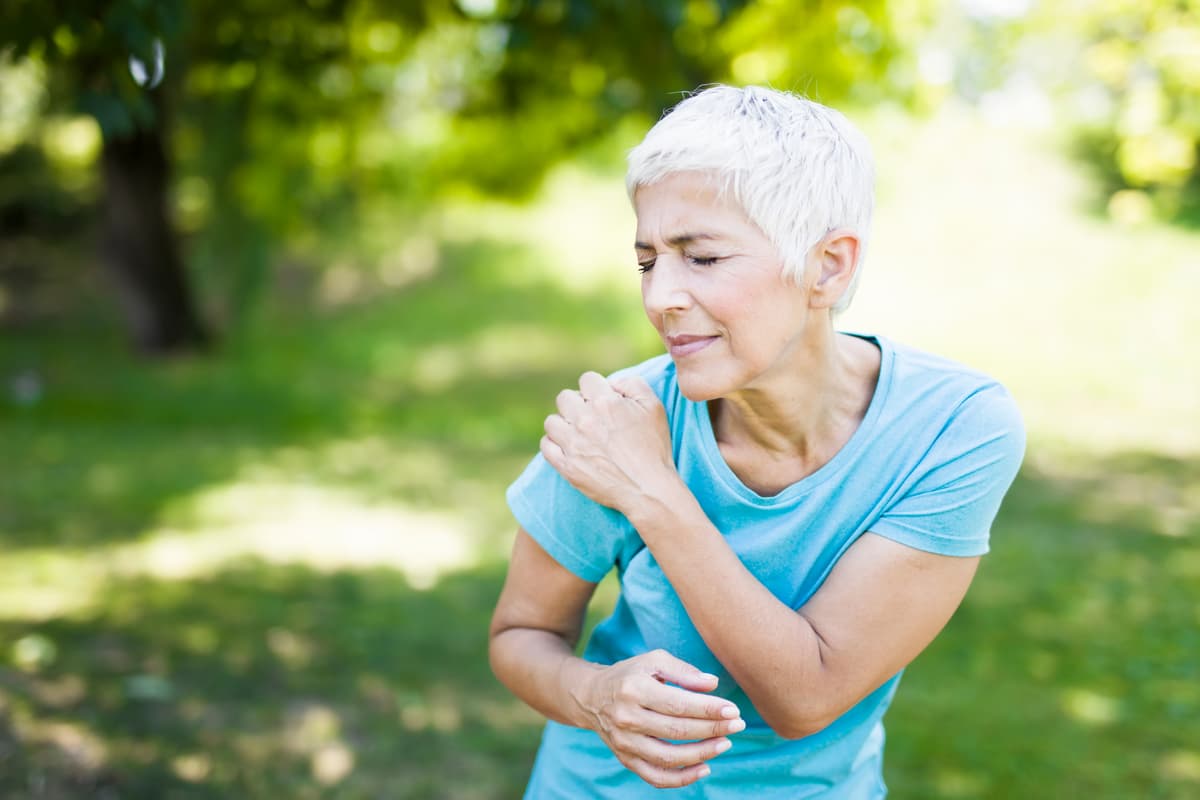Shoulder pain can affect anyone, but women face unique risks that make certain conditions more common—and often more complicated. In fact, studies show that issues like frozen shoulder occur up to 75% more often in women than in men.
From right shoulder pain caused by repetitive tasks, to discomfort in the left arm and shoulder that could point to something more serious, recognizing early warning signs can make all the difference between quick recovery and long-term complications.
This guide breaks down the 9 most common causes of shoulder pain in women, what to look out for, and when to seek help.
Why Women Are More Vulnerable to Shoulder Pain
Women’s shoulder health is influenced by hormones, anatomy, and lifestyle. For example:
Hormonal changes during menstruation, pregnancy, and menopause affect joint and tendon health.
Women may respond differently to certain gym-based shoulder workouts.
Lifestyle and occupational tasks (like carrying heavy bags or repetitive chores) often add to the strain.
Research suggests that 1 in 5 women experience shoulder pain at any given time, making awareness and prevention crucial.
1. Rotator Cuff Issues: The Most Common Culprit
The rotator cuff is a group of four muscles and tendons that stabilize your shoulder joint. In women, it’s particularly vulnerable due to hormonal and repetitive-use factors.
Signs to Watch For:
Pain when lifting arms overhead
Weakness in lifting or rotating the shoulder
Night pain, especially when lying on the affected side
Gradual onset of a dull, deep ache
Why Women Are More at Risk:
Hormonal fluctuations affecting tendon health
Frequent overhead movements (e.g., reaching into cupboards)
Early age-related degeneration
Incorrect form during home or gym exercises
Prevention Exercises:
Resistance band external rotations
Wall slides
Gentle shoulder rolls
Daily range-of-motion movements
2. Frozen Shoulder (Adhesive Capsulitis)
Frozen shoulder is up to 75% more common in women, typically between ages 40–60. It progresses in phases:
Freezing (2–9 months): Pain and stiffness increase, often worse at night.
Frozen (4–12 months): Pain eases but stiffness limits daily activities.
Thawing (5–24 months): Gradual return of movement, though stiffness may linger.
Key Risk Factors for Women:
Diabetes
Thyroid disorders
Hormonal changes in perimenopause
Prior shoulder injury or immobilization
3. Bursitis: When Joint Cushions Get Inflamed
Bursitis is inflammation of the fluid-filled sacs that cushion your shoulder joint.
Symptoms:
Swelling, redness, or warmth
Pain with movement or when lying on the affected side
Tenderness at specific spots
Common Triggers in Women:
Incorrect form during workouts
Carrying heavy bags on one shoulder
Sleeping on the same side nightly
Repetitive household chores
4. Tendonitis: Overuse and Poor Posture
Shoulder tendonitis results from repetitive use, poor posture, or lack of proper warm-up.
Early Signs:
Sharp or burning pain during movement
Stiffness on waking that eases with activity
Localized tenderness along tendons
Weakness in specific movements
Prevention Tips:
Warm up with light mobility before workouts
Gradually increase exercise intensity
Train all shoulder muscles evenly
Incorporate stretching and flexibility work
5. Arthritis: Wear and Tear of the Joint
Both osteoarthritis and rheumatoid arthritis affect women’s shoulders.
Osteoarthritis Symptoms:
Deep, throbbing pain (worse in the morning)
Stiffness after rest
Clicking or grinding sounds
Weather-related flare-ups
Rheumatoid Arthritis Symptoms:
Pain in both shoulders
Morning stiffness >1 hour
Swelling, redness, fatigue
6. Nerve Compression
Nerve issues—such as thoracic outlet syndrome or cervical radiculopathy—can mimic shoulder pain.
Warning Signs:
Tingling, numbness, or electric-shock sensations
Weak grip strength
Pain radiating from neck to arm
Symptoms worse when arms are overhead
Why Women May Be More Prone:
Postural changes during pregnancy and breastfeeding
Hormonal effects on nerve sensitivity
Autoimmune conditions affecting nerves
7. Cardiac Referred Pain: Don’t Ignore It
For women, left arm and shoulder pain can sometimes signal a heart problem. Unlike men, women’s cardiac symptoms can be subtle.
Seek immediate care if pain occurs with:
Chest pressure or tightness
Shortness of breath
Nausea, sweating, or unusual fatigue
Pain that worsens with activity
8. Hormonal & Pregnancy-Related Changes
Hormonal fluctuations affect tendons, ligaments, and recovery.
Pregnancy-related:
Upper back/shoulder strain from posture
Hormone-induced joint laxity
Restricted sleep positions causing stiffness
Menopause-related:
Reduced collagen in tendons
Stiffness and inflammation
Sleep disruption increasing pain sensitivity
9. Posture & Occupational Strain
Modern work and lifestyle habits are a major source of shoulder pain in women.
Tech Neck & Work-Related Pain:
Rounded shoulders from hours at a desk
Muscle imbalances from repetitive tasks
Tension headaches spreading into shoulders
Prevention Tips:
Shoulder rolls during work breaks
Ergonomic workspace setup
Frequent movement and posture resets
Strengthening postural muscles
Daily Self-Checks & Preventive Exercises
Self-Assessment:
Test your range of motion each morning
Track pain patterns (when, where, severity)
Notice if shoulder pain affects sleep
At-Home Exercises:
Shoulder rolls (10 forward, 10 backward)
Cross-body stretches (30 sec each side)
Wall slides (10–15 reps)
Resistance band rotations for strength
RESET’s Natural Approach to Shoulder Health
At RESET, we believe in supporting your body’s natural healing process. Our approach combines:
Plant-based anti-inflammatory support for tissue recovery
Movement therapy that respects your limits
Stress reduction techniques to ease pain perception
Holistic lifestyle support for faster recovery
When to Seek Professional Help
Seek immediate care if you notice:
Sudden severe pain after injury
Visible deformity or swelling
Cardiac-like symptoms with left shoulder pain
Fever with joint pain
Book a routine checkup if:
Pain lasts more than 2 weeks
Weakness or stiffness keeps progressing
Sleep is disrupted by shoulder pain
Everyday tasks become difficult
Conclusion
Shoulder pain in women can stem from multiple causes—from hormonal changes and poor posture to serious cardiac conditions. The good news: early detection and preventive care make a big difference.
By practicing good posture, adding daily mobility exercises, and staying mindful of early warning signs, you can protect your shoulder health for the long run.
Share this article:
